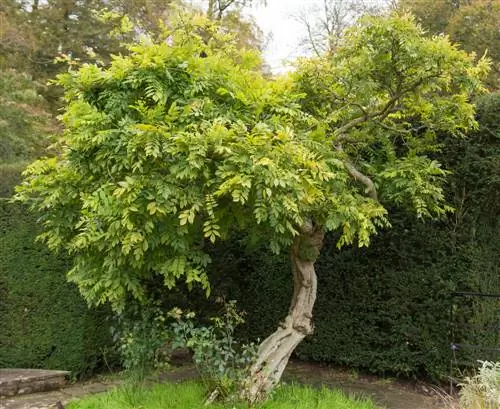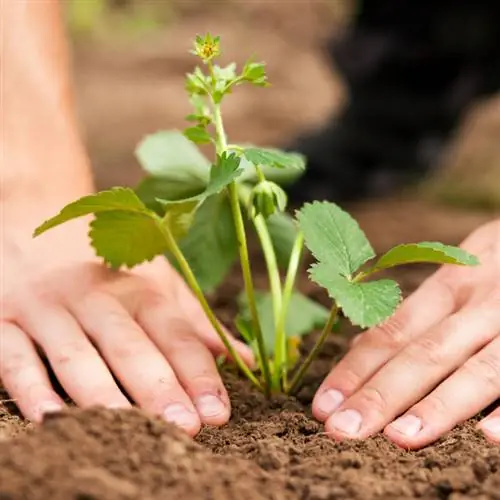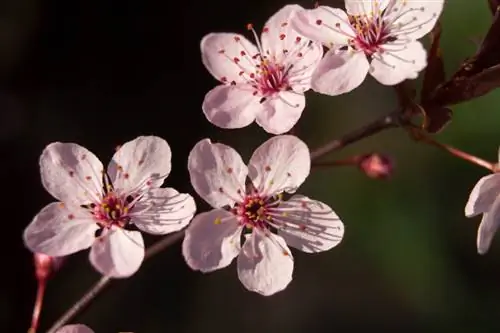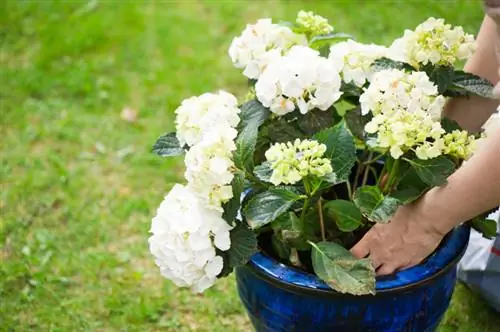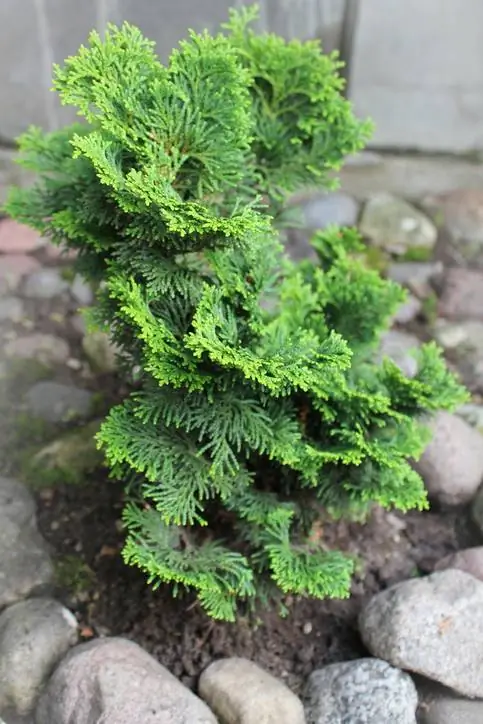- Author admin [email protected].
- Public 2023-12-16 16:46.
- Last modified 2025-01-23 11:21.
Transplanting a fully grown wisteria is certainly not easy. There should therefore be important reasons for this. After all, this lushly flowering climbing plant can live for several decades and should feel comfortable during this time.
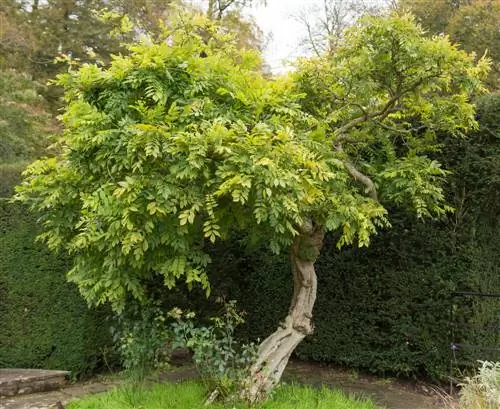
How to transplant a wisteria?
To successfully transplant a wisteria, first cut the plant back by about two thirds. Make sure to leave as many roots intact as possible and plant the wisteria in a sunny location with well-drained soil and low lime content.
Why should wisteria be transplanted?
There can be different reasons for transplanting a wisteria, but the most important ones are usually that the wisteria is not blooming or its space is needed for other purposes or plants. A possible cause for the lack of flowering is often an incorrect location.
So that your wisteria blooms profusely in the future, treat it to a sunny spot, as it doesn't like shade that much. On the other hand, a light, permeable soil with a low lime content is good for it.
You should keep this in mind when transplanting
The wisteria has both deep taproots and shallow roots that grow broadly. To give your plant the best possible chance of growing successfully in its new location, you should leave the roots intact as much as possible. They won't be able to do this completely with an old wisteria. But most of the time you don't have to worry too much because the wisteria is pretty robust.
Before you dig up the wisteria, you should first cut it back radically. In this way, you make your work much easier, but also your wisteria. This means it can grow back more easily.
Since not all of the roots have survived, your wisteria now needs a little more care than before. Water it a little more often, but not too much. However, you should use fertilizer sparingly.
The most important things in brief:
- roots deep and wide
- ideal time: autumn or early spring
- first cut the plant back by about two thirds
- Dig up the root ball as completely as possible
- Dig a sufficiently large planting hole
- Pour the soil well onto the existing roots
- do not fertilize excessively
Tip
If your wisteria is due to move, then don't wait much longer to transplant it. The younger the plant, the easier the work is and the better the wisteria tolerates the procedure.

